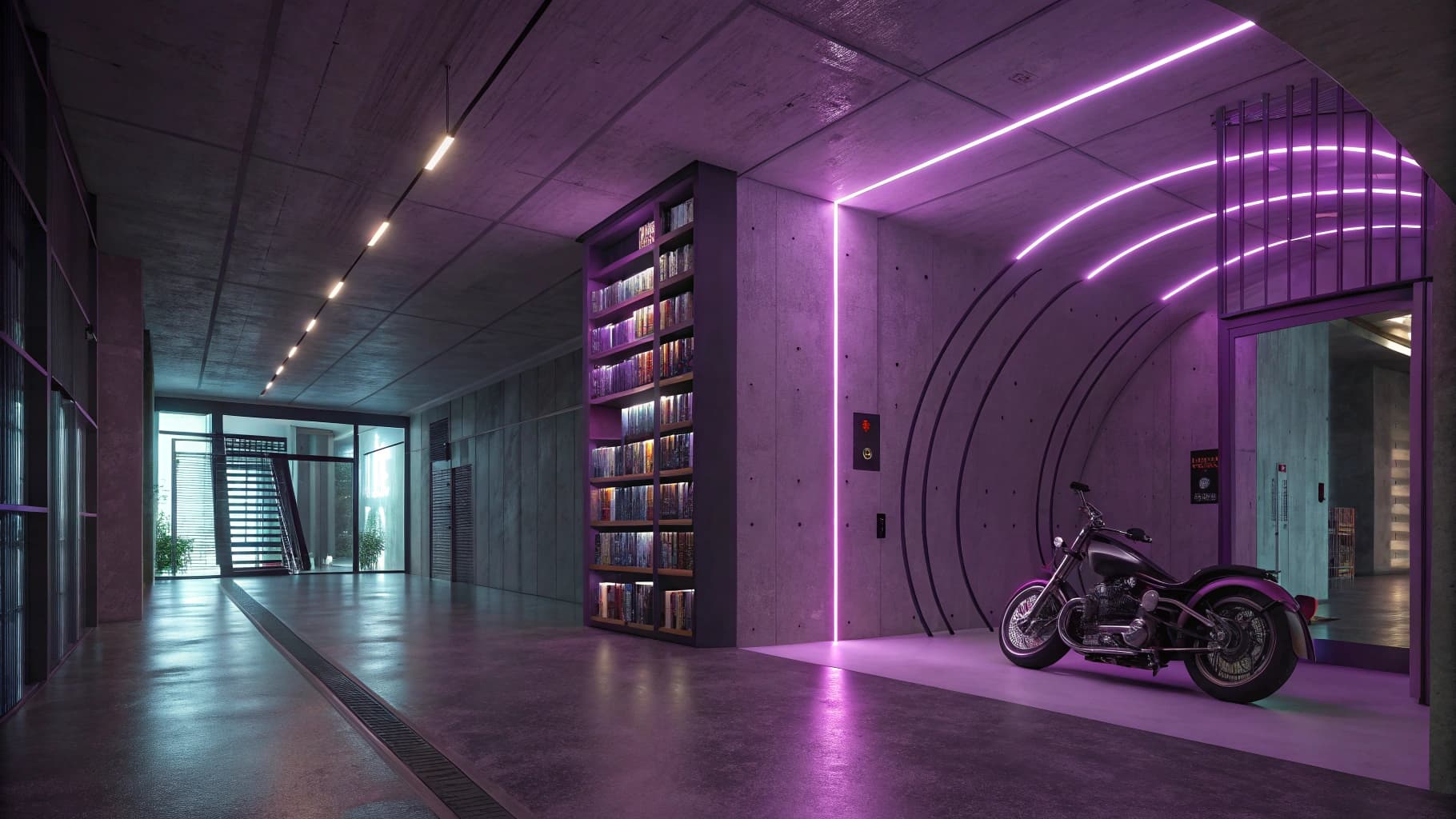The concept of secret escape tunnels has long fascinated historians and enthusiasts alike, tracing back to ancient civilizations where the need for discreet exits was paramount. In medieval Europe, castles were often equipped with hidden passages that allowed nobility to flee during sieges or unexpected attacks. These tunnels were ingeniously designed, often leading to nearby forests or rivers, providing a means of escape from imminent danger.
As time progressed, the architectural ingenuity of these tunnels evolved, particularly during the Renaissance period when the affluent began constructing grand mansions. The wealthy elite sought not only opulence but also security, leading to the incorporation of secretive designs into their estates. In the 18th and 19th centuries, the trend of building secret escape tunnels became more pronounced among the upper echelons of society.
The tumultuous political climate, marked by revolutions and social upheaval, prompted many aristocrats to consider their safety. The construction of these tunnels was often shrouded in secrecy, with only a select few privy to their existence. This era saw the rise of elaborate estates, where hidden passages were not merely functional but also served as a testament to the owner’s wealth and ingenuity.
The tunnels often connected various parts of the mansion, allowing for discreet movement without drawing attention from servants or guests.
The Purpose of Secret Escape Tunnels
The primary purpose of secret escape tunnels has historically been to provide a means of escape in times of crisis. For many wealthy individuals, the threat of kidnapping, assassination, or political unrest necessitated a reliable exit strategy. These tunnels offered a quick and unobtrusive way to evade danger, allowing individuals to slip away unnoticed.
In some cases, these passages were designed to lead to safe houses or remote locations where the occupants could regroup and plan their next steps without fear of being pursued. Beyond mere escape routes, secret tunnels also served as conduits for clandestine activities. During periods of political strife, such as the American Civil War or the French Revolution, these passages facilitated the movement of sympathizers and resources between factions.
They became vital for those involved in espionage or underground movements, allowing for discreet communication and transport. The dual purpose of these tunnels—both as escape routes and as means for covert operations—highlights their significance in historical contexts where secrecy and safety were paramount.
Famous Mansions with Secret Escape Tunnels
Several notable mansions around the world are renowned for their secret escape tunnels, each with its own unique history and purpose. One such example is the infamous Winchester Mystery House in California. Built by Sarah Winchester, the widow of firearm magnate William Wirt Winchester, this sprawling estate is filled with architectural oddities and hidden passages.
While primarily known for its labyrinthine design, it is rumored that some of these hidden corridors served as escape routes for Sarah during her tumultuous life, reflecting her belief in spirits and the need for protection. Another prominent example is the Biltmore Estate in North Carolina, which boasts a rich history intertwined with the Vanderbilt family. This grand mansion features a network of hidden passages that were used for both practical purposes and entertainment.
The tunnels allowed staff to move discreetly throughout the estate without disturbing guests, but they also provided a means for family members to escape from unwanted visitors or prying eyes. The Biltmore’s design exemplifies how secret tunnels can enhance both functionality and privacy within a luxurious setting.
The Construction and Design of Secret Escape Tunnels
The construction of secret escape tunnels requires meticulous planning and skilled craftsmanship. Historically, these tunnels were often built using local materials that blended seamlessly with the surrounding landscape. Stone and brick were common choices, providing durability while allowing for discreet integration into the mansion’s architecture.
The design process involved careful consideration of factors such as accessibility, security, and concealment. Architects would often collaborate with engineers to ensure that the tunnels could withstand potential threats while remaining hidden from view. In terms of layout, secret escape tunnels were typically designed to be direct yet unobtrusive.
They often featured gentle slopes and curves to prevent detection from above ground. Some tunnels included features such as ventilation shafts or concealed entrances that blended into existing structures like closets or basements. The use of false walls or hidden doors was common, allowing for easy access while maintaining an air of secrecy.
The ingenuity behind these designs reflects not only a desire for safety but also an appreciation for architectural artistry.
The Role of Secret Escape Tunnels in Security
Secret escape tunnels have played a crucial role in enhancing security for those who inhabit mansions and estates. By providing a discreet means of egress during emergencies, these tunnels serve as a vital component of a comprehensive security strategy. In an era where threats can arise unexpectedly—be it from intruders or natural disasters—having a reliable escape route can mean the difference between safety and peril.
Many modern mansions continue to incorporate similar designs into their security plans, recognizing the value of having multiple layers of protection. Moreover, the psychological aspect of having a secret escape tunnel cannot be overlooked. For many homeowners, knowing that they have a hidden route available instills a sense of confidence and peace of mind.
This assurance can be particularly important for high-profile individuals who may face unique security challenges due to their public personas. The presence of an escape tunnel can serve as a deterrent against potential threats, as it demonstrates preparedness and foresight in addressing security concerns.
The Intrigue and Mystery Surrounding Secret Escape Tunnels
The Romanticization of Secret Tunnels
Many stories surrounding these tunnels are steeped in legend, with rumors suggesting that they were used for clandestine meetings or even illicit activities. This mystique adds an element of excitement to historical mansions, drawing visitors who are eager to uncover their secrets. In popular culture, secret escape tunnels have been romanticized in literature and film, further enhancing their enigmatic reputation.
The Power of Hidden Passages in Storytelling
From classic detective novels to modern thrillers, these hidden passages often serve as pivotal plot devices that propel characters into action or reveal unexpected twists.
A Timeless Fascination
The fascination with secret tunnels reflects a broader human curiosity about hidden spaces and the stories they hold—an interest that transcends time and culture.
Modern-Day Applications of Secret Escape Tunnels in Mansions
In contemporary society, the concept of secret escape tunnels has evolved but remains relevant among those who prioritize privacy and security in their homes. Modern mansions often incorporate advanced technology alongside traditional design elements to create sophisticated escape routes that are both functional and discreet. For instance, some luxury estates feature high-tech surveillance systems that monitor potential threats while ensuring that escape routes remain concealed from prying eyes.
Additionally, modern architects are increasingly integrating sustainable practices into the design of these tunnels. Utilizing eco-friendly materials and energy-efficient lighting systems allows homeowners to maintain their commitment to environmental responsibility while enhancing security features. The blending of traditional architectural techniques with modern innovations reflects a growing awareness of both safety and sustainability in luxury home design.
Ethical and Legal Considerations of Secret Escape Tunnels
The construction and use of secret escape tunnels raise important ethical and legal considerations that must be addressed by homeowners and architects alike. One significant concern is the potential for misuse; while these tunnels can provide safety during emergencies, they may also be exploited for illegal activities such as smuggling or evading law enforcement. Homeowners must navigate the fine line between ensuring personal safety and adhering to legal regulations regarding property modifications.
Furthermore, transparency is essential when it comes to property disclosures during real estate transactions. Potential buyers should be informed about any hidden features within a mansion, including secret escape tunnels, as these elements can impact property value and insurance considerations. Ethical considerations extend beyond legality; they encompass issues related to privacy rights and community safety as well.
As society grapples with evolving notions of security and privacy, the conversation surrounding secret escape tunnels will likely continue to develop in both legal and ethical contexts.
If you’re interested in home automation and security, you may also want to check out this article on fixing smart plugs and troubleshooting automation issues. It provides helpful tips on how to ensure your smart home devices are working properly and keeping your home safe.
FAQs
What are secret escape tunnels in mansions?
Secret escape tunnels in mansions are hidden passageways that were often built for the purpose of providing a discreet means of escape in the event of an emergency or threat.
Why do some mansions have secret escape tunnels?
Some mansions have secret escape tunnels due to historical reasons, such as during times of war or political unrest, when the wealthy and powerful individuals who lived in these mansions needed a means of escape in case of invasion or attack.
Where are these secret escape tunnels typically located?
Secret escape tunnels in mansions are often located in hidden areas such as behind bookshelves, under staircases, or in basements. They are designed to be discreet and not easily noticeable.
Are secret escape tunnels still being built in modern mansions?
While the construction of secret escape tunnels in modern mansions is rare, some individuals may still choose to include them for security or privacy reasons.
What are some famous examples of mansions with secret escape tunnels?
Famous examples of mansions with secret escape tunnels include the Winchester Mystery House in California and the Underground Railroad tunnels in some historic homes in the United States. These tunnels have become popular tourist attractions due to their historical significance.

